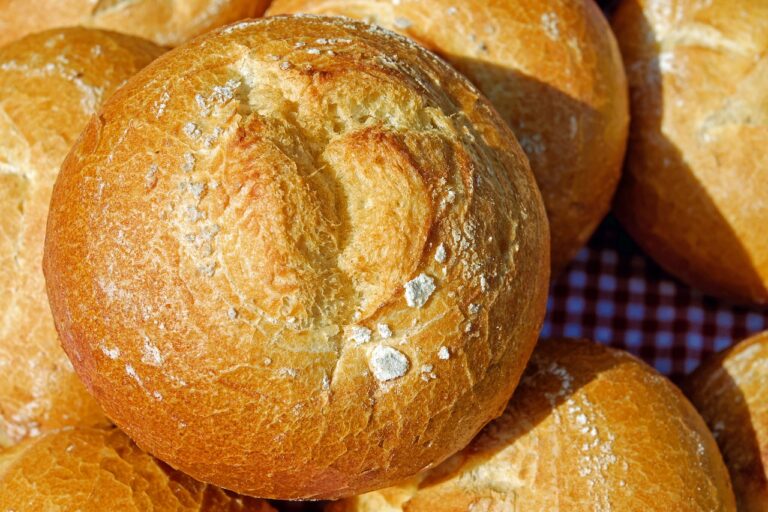Addressing Challenges in Testing Food Preservation Techniques for Safety
11xplay, reddy anna book, goldenexch 7777: Food safety is a critical aspect of the food industry, especially when it comes to preserving food for consumption. With the increasing demand for convenience foods and longer shelf life, food preservation techniques play a crucial role in ensuring the safety and quality of the food we eat. However, testing these preservation techniques for safety can pose challenges that need to be addressed to guarantee the effectiveness of the process.
In this blog post, we will explore the challenges that come with testing food preservation techniques for safety and provide insights on how these challenges can be overcome to ensure the safety of our food supply.
Understanding the Importance of Food Preservation Techniques
Food preservation techniques are essential for extending the shelf life of food products and preventing the growth of harmful bacteria that can cause foodborne illnesses. These techniques involve processes such as canning, freezing, drying, and fermentation, all of which aim to inhibit the growth of microorganisms and enzymes that can spoil food.
Testing the efficacy of these preservation techniques is crucial to ensure that they are effective in preventing food spoilage and contamination. This testing involves conducting microbiological, chemical, and sensory analyses to determine the safety and quality of the preserved food products.
Challenges in Testing Food Preservation Techniques for Safety
1. Variation in Microbial Load: One of the significant challenges in testing food preservation techniques is the variability in the microbial load present in different food products. Microorganisms such as bacteria, yeasts, and molds can vary in their resistance to preservation techniques, making it challenging to determine the effectiveness of these techniques across different food products.
2. Cross-Contamination Risk: Another challenge is the risk of cross-contamination during the preservation process, which can lead to the introduction of harmful pathogens into the food products. It is essential to implement strict hygiene practices and sanitation measures to prevent cross-contamination and ensure the safety of the preserved food.
3. Influence of Processing Conditions: The processing conditions, such as temperature, pH, and oxygen levels, can significantly impact the efficacy of food preservation techniques. Variations in these processing conditions can result in inconsistent preservation outcomes, making it challenging to assess the safety of the preserved food products accurately.
4. Chemical Residues: Some preservation techniques involve the use of chemicals such as preservatives and additives to inhibit microbial growth. Testing for chemical residues in the preserved food products is essential to ensure that they comply with safety regulations and do not pose any health risks to consumers.
5. Shelf Life Assessment: Determining the shelf life of preserved food products is crucial for ensuring their safety and quality. However, assessing the shelf life of these products can be challenging due to the complex interactions between the preservation techniques and the food matrix, making it difficult to predict the stability of the products over time.
6. Regulatory Compliance: Meeting regulatory requirements and standards for food safety testing is another challenge that food manufacturers face when testing preservation techniques. Ensuring compliance with these regulations is essential to guarantee the safety and quality of the preserved food products and maintain consumer trust.
Overcoming the Challenges in Testing Food Preservation Techniques for Safety
1. Standardized Testing Protocols: Developing standardized testing protocols for evaluating the safety of food preservation techniques can help ensure consistent and reliable results across different food products. These protocols should include microbiological, chemical, and sensory analyses to assess the efficacy of the preservation techniques comprehensively.
2. Quality Control Measures: Implementing robust quality control measures during the preservation process can help minimize the risk of cross-contamination and ensure the safety of the preserved food products. Regular monitoring of processing conditions and hygiene practices can help identify and mitigate potential risks of contamination.
3. Research and Development: Investing in research and development efforts to improve food preservation techniques can help address the challenges associated with testing for safety. Developing innovative preservation methods that are more effective and sustainable can help enhance the safety and quality of preserved food products.
4. Collaboration and Knowledge Sharing: Collaborating with industry partners, research institutions, and regulatory agencies can help food manufacturers access valuable insights and resources to address the challenges in testing food preservation techniques. Sharing knowledge and best practices can help drive continuous improvement in food safety testing processes.
5. Continuous Monitoring and Evaluation: Continuously monitoring and evaluating the efficacy of food preservation techniques is essential to ensure their safety and effectiveness. Implementing regular testing and validation procedures can help identify any deficiencies or issues in the preservation process and take corrective actions promptly.
6. Training and Education: Providing training and education to food industry professionals on food safety testing procedures and best practices can help enhance their skills and knowledge in ensuring the safety of preserved food products. Investing in employee training and development can help build a culture of food safety within the organization.
FAQs
1. What are the most common food preservation techniques used in the industry?
The most common food preservation techniques used in the industry include canning, freezing, drying, and fermentation. These techniques help inhibit the growth of microorganisms and enzymes that can spoil food and extend the shelf life of food products.
2. How can I ensure the safety of preserved food products at home?
To ensure the safety of preserved food products at home, it is essential to follow proper food preservation techniques, such as using clean and sanitized equipment, maintaining proper processing conditions, and storing the products at the recommended temperature. Additionally, conducting regular microbiological and chemical analyses can help verify the safety of the preserved food products.
3. What regulatory requirements should food manufacturers comply with when testing food preservation techniques for safety?
Food manufacturers should comply with regulatory requirements and standards set by organizations such as the Food and Drug Administration (FDA) and the United States Department of Agriculture (USDA) when testing food preservation techniques for safety. These regulations ensure that the preserved food products meet safety and quality standards and do not pose any health risks to consumers.
In conclusion, addressing the challenges in testing food preservation techniques for safety is crucial to ensuring the safety and quality of our food supply. By implementing standardized testing protocols, quality control measures, research and development efforts, collaboration and knowledge sharing, continuous monitoring and evaluation, and training and education, food manufacturers can overcome these challenges and provide consumers with safe and nutritious preserved food products.







